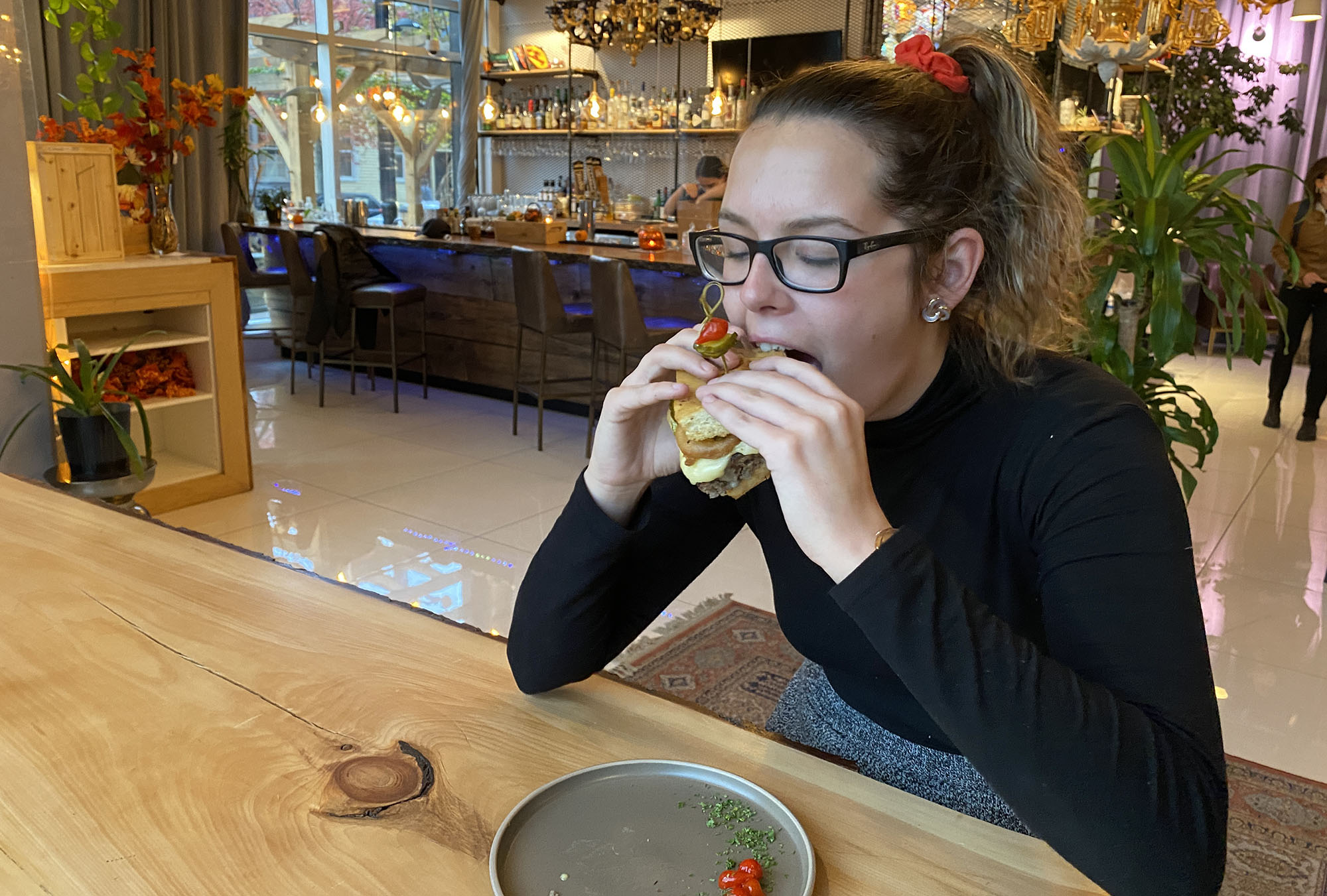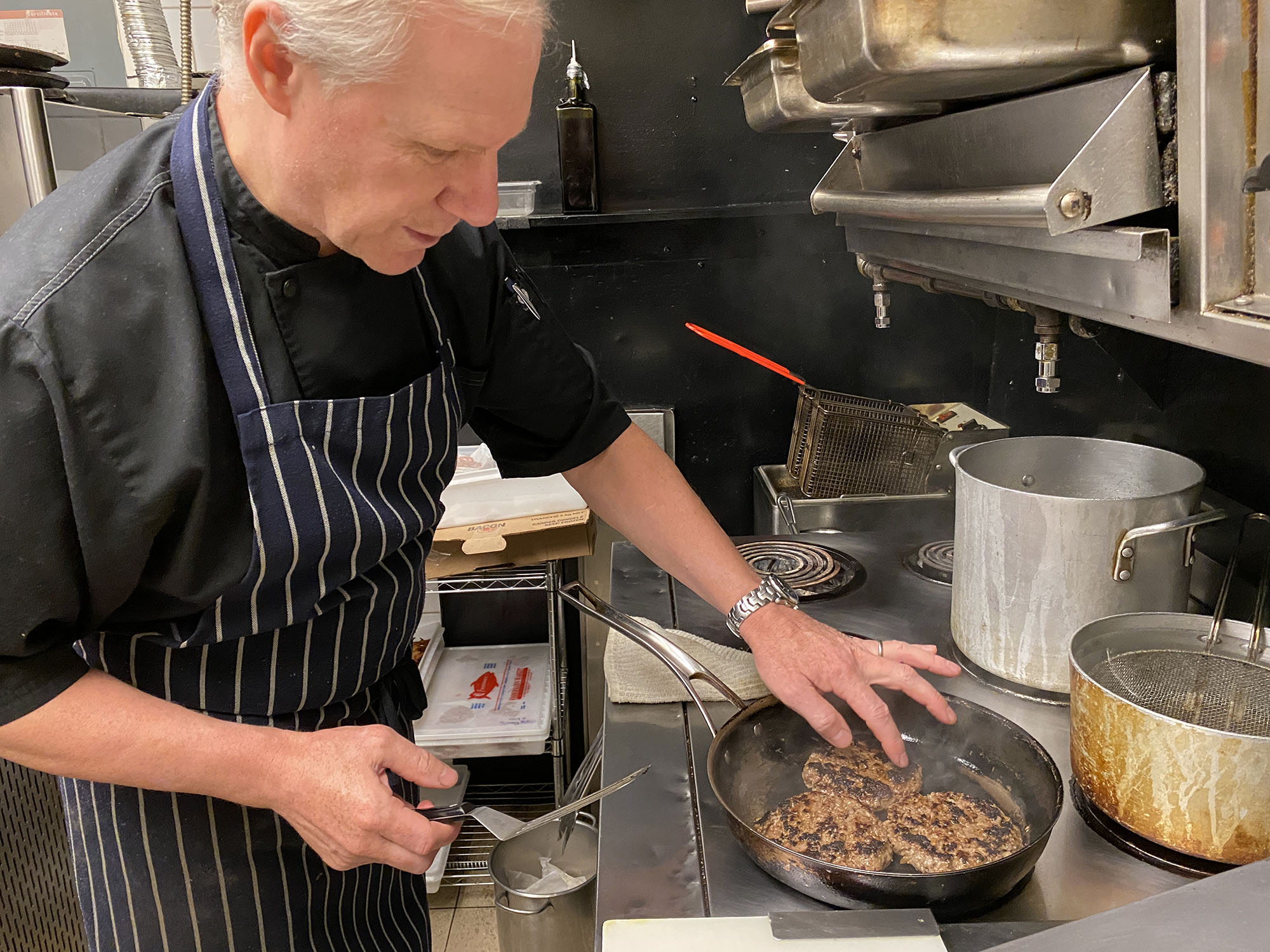From burgers to cruise ships

caption
Burgers are seen on a calendar in this photo illustration.Ad sales down? Need to connect with your audience? Producing events is helping journalism outlets survive
In March 2020, the Coast newspaper’s windowless, wood-floored conference room was packed with flyers, baseball caps and cardboard boxes.
Publisher Christine Oreskovich describes the meeting space as “our boiler room at the office.” Boxes were stacked everywhere. At one point, she thought, “You can barely move.”
The Halifax alt-weekly’s small team was busily preparing for its annual Burger Week food festival. The dozens of three-foot by two-foot boxes, waiting to be filled with marketing swag and shipped to participating restaurants, reached high enough to graze the white-painted fire sprinkler pipes.
But even as preparations for Burger Week ramped up, its future was in jeopardy. COVID-19 was spreading fast in Canada, and the threat of a Nova Scotia outbreak was looming.
Her staff had already purged any dates from the marketing materials, in case government brass ordered a halt to large gatherings. But it was not the guidance of public health agencies that ultimately convinced the Coast to put Burger Week on ice. It was hockey.
On March 12, the National Hockey League halted its games indefinitely. The dramatic and costly move shifted Oreskovich’s perception of the danger posed by COVID-19 and spurred an official Burger Week postponement on March 13 – just two days before the promotional campaign was set to launch.
“We spent tens of thousands of dollars on marketing, and we just had to shut it all down,” she says. “It was like, ‘Could this possibly be happening?’ And it did.”

caption
Kelly Chapman, a manager at the Garden Food Bar & Lounge on Clyde Street, poses with her restaurant’s Burger Week offering. She says the eatery sold about 200 burgers a day during Burger Week, compared to single-digit sales figures under normal conditions.The business of burgers
For the Coast, delaying Burger Week was a steep financial sacrifice.
The event is part of a trend that has seen news outlets ranging from Texas Monthly magazine to the Globe and Mail cultivate side businesses hosting events like music festivals, conferences and destination cruises.
Colette Brin, a professor at Université Laval who studies the evolution of journalism, compares the strategy to musicians who supplement their touring income by selling T-shirts.
“This is not necessarily a major revenue stream,” she says. “But if you have an audience with that kind of lifestyle and those kinds of resources, well then it’s interesting, in terms of supplementing income.”
The new model has been spurred by the devastating effects of social media and the Internet on the once lucrative business of print advertising.
In 2009, print ads in Canada generated about $4 billion, according to industry group News Media Canada. By 2018, that had fallen to less than $1.8 billion.
Online ads have not compensated for the vanishing print dollars. In 2009, digital advertising generated about $213 million for Canadian newspapers. By 2018, that was still just $330 million.
Faced with the grim landscape, Oreskovich and her business partner and husband, Kyle Shaw, concocted a plan to leverage the paper’s street cred in service of novel marketing schemes.
Held annually since 2013, Burger Week sees about 150 local eateries pay up to $750 to be included in the Coast’s list of participating restaurants and featured in the festival’s promotional material. If a restaurant buys ads, it can receive a discount on its participation fee.
Festivalgoers then explore Halifax, stopping to buy fanciful hamburgers, such as a burger with the texture and appearance of gelato, a burger topped with smoked meat and a burger that comes with a layer of Thanksgiving stuffing.
Oreskovich believes the model works because businesses still see the Coast brand as influential, despite declining income from print ad sales.
Brin echoes the need for strong brand reputation. She says that event hosting “requires a particular mix of resources and reputation… That kind of combination is not easy to find.”
Gavin Adamson, an associate journalism professor at Ryerson University and a former Bloomberg reporter, warns that event hosting could damage that same reputational capital.
He says news outlets hosting events with the aim of marketing another company’s products or profiting from ticket sales could be confusing to a public already sceptical of journalism. But, he adds, many news outlets don’t “have a choice. I think they have to do things like this.”
For eight years, the Coast’s gambit has worked. Oreskovich says Burger Week reliably helps restaurants jumpstart the busy spring season with hungry crowds.
“Do I wish my efforts were being spent on figuring out an investigative news story?,” she asks. “Yes. But, as publishers, this is what we have to do now.”

caption
Primal Kitchen owner Morné Van Antwerp cooks Burger Week beef patties as he prepares for the arrival of customers. He says 2020 Burger Week sales were down from 2019, but only slightly.130,000 square feet
The Globe and Mail has cultivated a similar side business to the Coast, hosting wine cruises and other getaways on rented cruise ships starting in 2018. Unlike the Coast, a key draw for guests is the chance to meet and talk with Globe reporters.
“If the experience of going on a cruise makes you feel more enthusiastic,” says publisher Phillip Crawley, “that’s all part of building loyalty, building a habit of following the Globe and Mail.”
Also boosting revenue for the Globe is a 130,000 square-foot event space on the top floor of its new office tower, which was completed three years ago. It can hold up to 300 people.
The Globe and Mail Centre features plate glass windows and terraces overlooking downtown Toronto. It hosts the paper’s own speaking events and is rented out for weddings, dinners and other gatherings.
For the fiscal year that ended in August, the Globe’s event division was projected to generate about $13 million, mostly through the centre. Crawley says that target was within reach until COVID-19 forced all the scheduled events to be postponed.
Despite the eye-catching revenue numbers, the centre only accounts for about 10 per cent of the Globe’s income. Crawley hopes that number will eventually reach about 20 per cent, but he says that direct profit is not the centre’s main purpose.
The Globe’s event business has two aims: to increase subscriber loyalty and to attract new readers.
“The more loyalty, the more you can create an experience that goes beyond just the content that you’re providing them with. You build that connection,” he says. “It really does help.”
Crawley’s strategy may be working. Subscriptions have grown steadily for several years, he says, and, along with single-paper sales, they now account for about two-thirds of the Globe’s income. He said the paper has about 150,000 subscribers and plans to add another 100,000.
A few blocks away, at Ryerson University, Adamson believes that using events to increase subscriptions may be more consistent with journalistic principles than hosting marketing events.
“I do see less conflict in that model,” he says. The Globe Centre “almost becomes like an extension of the masthead that someone may have seen when they used to pick up the paper at the corner.”
Skeet shooting and Porsches
Texas Monthly, a general interest magazine in the Lone Star State capital Austin, conceived event hosting as an extension of its advertising and marketing division, like the Coast.
When now-chief innovation officer Tim Taliaferro was hired in 2016, originally as editor in chief, an annual barbeque festival was already well-established. In the years after his arrival, the magazine tried to become an event promoter for hire.
But the complexity and competitiveness of the industry meant margins were thin, and the magazine pivoted to focus on highlighting its own brand, like the Globe and Mail. It still organizes gatherings for other organizations, but rarely.
For example, in 2018 it arranged a day of skeet shooting at a country club to promote a new Porsche SUV, partly because the luxury carmaker also buys ad space.
EDGE: The Texas Monthly Festival is a collection of music and speaking events created partly to promote the magazine. And Texas Monthly Live sees journalists tour the state performing live recreations of their articles.
Pre-coronavirus, events were budgeted to generate more than $2.6 million for Texas Monthly in 2020 – about a tenth of total revenue.
“We started out thinking, ‘Oh, this will be a big money maker’,” Taliaferro says, “and have ended more on, well, let’s make sure these are really good so that it expands our audience and helps us reach new people.”
Back in the black
The Globe and Mail Centre sat empty for much of the spring and summer, thanks to COVID-19. Texas Monthly cancelled in-person events and has taken its Burger Week-style barbeque festival online, allowing, says Taliaferro, “people to eat barbeque while other people are eating barbeque.” And after a false start in August, the Coast relaunched Burger Week in October.
Crawley, though, strikes an optimistic tone. Encouraging clients to postpone Globe and Mail Centre events has allowed the paper to defer revenue, rather than lose it completely. Now, with social distancing requirements easing, the money is once again beginning to trickle in.
Back at the Coast, Oreskovich says that Burger Week remains profitable, despite the delays. With Nova Scotia’s economy mostly re-opened, she says, many restaurants are keen to make up for lost time.
“They need business. They need people out. They need people eating,” she says. “We can help them with that.”

